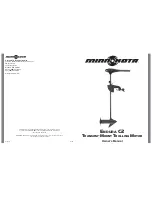
9.2
The PC BIOS Startup Sequence
When the board starts up without operator intervention, it will run a basic Power-On Self-Test
(POST) sequence, including ECC DRAM initialization and a DRAM test. The full DRAM test will
be omitted on
subsequent
restarts if the BIOS configuration settings have not been changed.
Once the DRAM test has completed, the board will try to bootload application software from any
attached mass storage medium or through one or both of the Ethernet interfaces.
When the PC BIOS starts after changing the battery, losing battery power or after using the
CMOS CLEAR jumper, it may report a CMOS Checksum Error or some other problem. This will
be following by a prompt to the operator to press <F1> to continue or <F2> to enter Setup mode.
If no key is pressed within approximately five seconds, the PC BIOS will continue with its normal
startup sequence. It will also re-calculate the CMOS Checksum to prevent this error occurring
again at a subsequent restart.
Pressing the <F2> key at any time during the PC BIOS startup sequence will result in the BIOS
Setup menu being entered. The Setup menu is quite extensive, and is provided with
context-sensitive help information which is displayed in the right-hand panel on screen.
NOTE
When the <F2> key is pressed, a few seconds may elapse before the BIOS Setup
menu appears. The PC BIOS will always run BIOS Extensions for any PMC
modules it detects before responding to the keypress.
PC BIOS
VP 110/01x
9-3
Summary of Contents for VP 110/01 Series
Page 18: ...This page has been left intentionally blank 1 6 VP 110 01x Introduction and Overview ...
Page 60: ...This page has been left intentionally blank 7 6 VP 110 01x Memory ...
Page 88: ...This page has been left intentionally blank 9 8 VP 110 01x PC BIOS ...
Page 122: ...This page has been left intentionally blank 11 28 VP 110 01x VSA Mode Diagnostics ...
Page 150: ...This page has been left intentionally blank B 8 VP 110 01x Breakout Modules ...
















































